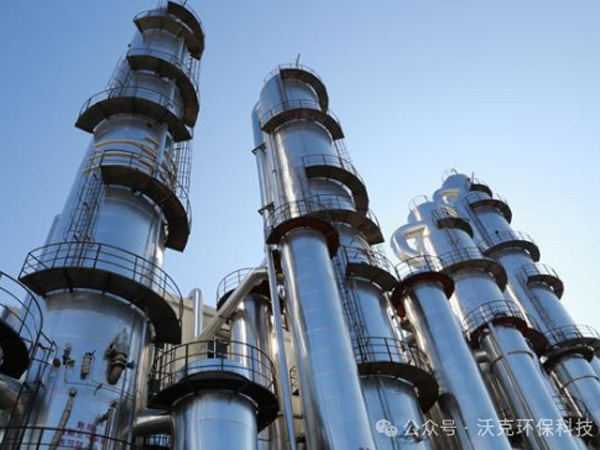Alcohol wastewater case
Alcohol wastewater has a large drainage volume and high suspended solids content, belonging to high-concentration organic wastewater with a slightly acidic pH.
Project Name: Alcohol Wastewater Treatment Project in Henan, China; Treatment Scale: 2000m3/d; Membrane Module Model: GM256-2241, Quantity: 28 sets, Area: 7168m2; Water Quality Characteristics
Wastewater quality indicators: COD: 47000mg/L, BOD5: 28000 mg/L, SS: 4100 mg/L, Ammonia nitrogen: 80 mg/L. It can be seen that the characteristics of alcohol wastewater are high concentration, high suspended solids, and good biodegradability (BOD5/COD=0.59).
Advantages of GMBR Technology
Highly efficient removal of organic matter: The membrane module forcibly mechanically retains the biological sludge, greatly increasing the concentration of microorganisms, enriching the types of microorganisms, fully degrading organic matter, and achieving the treatment of high-concentration organic wastewater.
Effective removal of pigments and suspended solids: Pigments and suspended solids in dyeing wastewater are often difficult to degrade and remove, but the GMBR process can effectively remove small particles and pigment molecules through membrane filtration, retaining them inside the reactor.
Good effluent quality: The effluent quality after treatment by the GMBR process is stable and meets the discharge standards, and can be directly reused or further deeply treated.
Small footprint: Compared with the traditional activated sludge method, the GMBR process does not require sedimentation tanks and secondary sedimentation tanks, and has a smaller footprint.
Treatment Effect
|
Project |
COD(mg/L) |
Nitrogen(mg/L) |
SS(mg/L) |
|
Influent |
47000 |
80 |
4100 |
|
Effluent |
46 |
1.1 |
0 |
Project Image

Figure GMBR membrane pool

Previous:


COOKIES
Our website uses cookies and similar technologies to personalize the advertising shown to you and to help you get the best experience on our website. For more information, see our Privacy & Cookie Policy
COOKIES
Our website uses cookies and similar technologies to personalize the advertising shown to you and to help you get the best experience on our website. For more information, see our Privacy & Cookie Policy
These cookies are necessary for basic functions such as payment. Standard cookies cannot be turned off and do not store any of your information.
These cookies collect information, such as how many people are using our site or which pages are popular, to help us improve the customer experience. Turning these cookies off will mean we can't collect information to improve your experience.
These cookies enable the website to provide enhanced functionality and personalization. They may be set by us or by third-party providers whose services we have added to our pages. If you do not allow these cookies, some or all of these services may not function properly.
These cookies help us understand what you are interested in so that we can show you relevant advertising on other websites. Turning these cookies off will mean we are unable to show you any personalized advertising.



